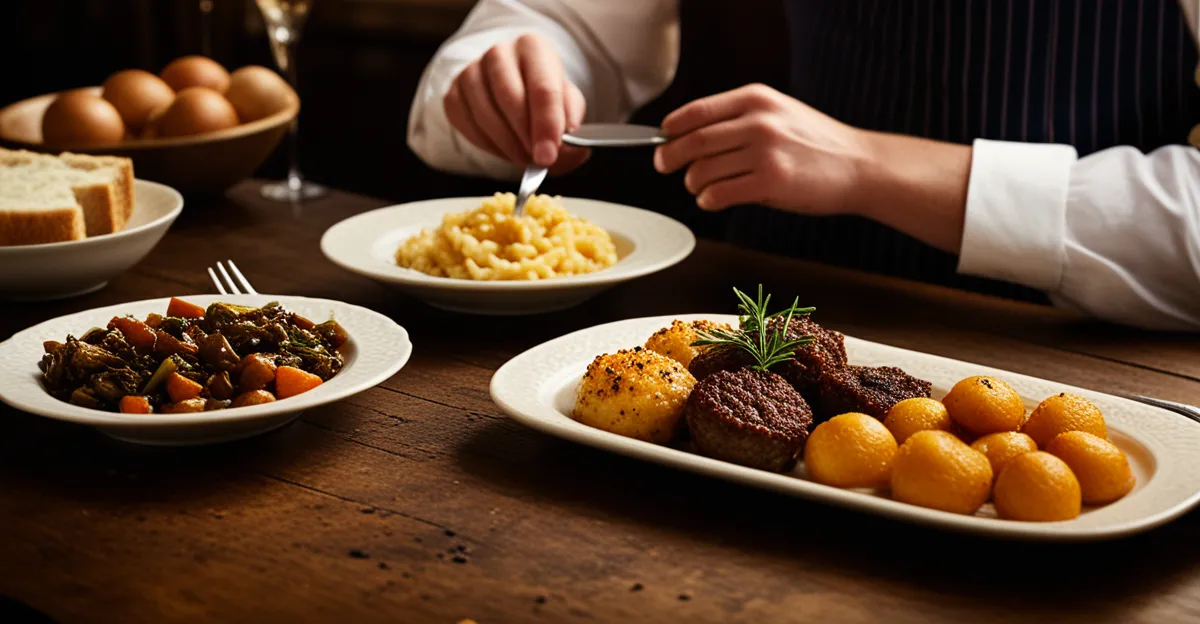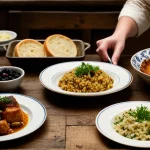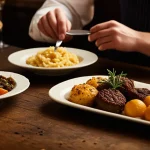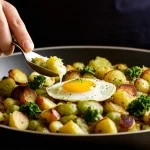Distinctive Ingredients Shaping British Cuisine
British cooking staples are deeply rooted in traditional British ingredients, which form the foundation of its signature flavors. Core components often include hearty root vegetables—think potatoes, parsnips, and carrots—paired with rich meats like beef, lamb, and pork. Seafood, especially cod and haddock, also plays a central role, particularly in coastal regions.
Unique herbs such as mint, bay leaf, and parsley add subtle yet definitive notes to many dishes. Mace, less common elsewhere, is a distinctive British seasoning often found in classic recipes, showcasing the depth of British flavor profiles.
Also to read : How can you create a delicious and hearty bubble and squeak?
Condiments reinforce these tastes further. Malt vinegar, for example, is synonymous with traditional fish and chips, providing a tangy contrast. English mustard adds a sharp kick, while HP Sauce offers a smoky, sweet complexity that enhances meats and pub fare alike.
Together, these ingredients create a versatile palette, allowing traditional British recipes to remain vibrant and flavorful. They exemplify how British cooking staples blend simplicity with taste, reflecting a cuisine that honors its past while inviting modern appreciation.
Have you seen this : Exploring Traditional UK Recipes: Are These Dishes Still Relevant Today?
Classic Dishes Showcasing Iconic Flavors
Traditional recipes in British cuisine highlight core British flavor profiles through well-known dishes. For instance, roast beef served with horseradish sauce remains a timeless classic, showcasing the rich taste of quality beef enhanced by the sharpness of the horseradish. Shepherd’s pie, made with minced lamb or beef, combines hearty meats and root vegetables into a comforting, layered casserole that exemplifies British dishes rooted in simplicity and nourishment.
Fish and chips stand out as one of the most recognizable British dishes worldwide, where flaky cod or haddock is battered and fried to golden perfection, then traditionally paired with malt vinegar and a side of mushy peas. This combination delivers contrasting textures and flavors that are immediately recognizable in traditional recipes.
Traditional puddings and pies further embody British culinary heritage. From steak and kidney pie to sticky toffee pudding, these dishes leverage slow cooking techniques and signature flavorings to create warmth and depth. Pairings such as mint sauce served with lamb highlight how accompaniments intensify the overall dining experience, reinforcing the distinctiveness of British flavor profiles across meals.
Cultural and Historical Influences on British Taste
British culinary history reflects a rich mosaic shaped by centuries of cultural flavor origins and food traditions. The impact of colonial trade significantly broadened the British palate, introducing exotic spices like cinnamon, nutmeg, and mace into traditional British ingredients. These additions transformed simple British cooking staples, enriching signature flavors with global influences.
Regional specialties also contribute distinct seasonings, rooted in local produce and customs. For example, Cornish pasties highlight hearty fillings suited to miners’ needs, while Scottish dishes often feature smoked fish and oats, illustrating how geography influences British flavor profiles. Social and historical events, such as wartime rationing, encouraged inventive uses of limited ingredients, reinforcing a tradition of humble yet flavorsome cooking.
This interplay of trade, regionality, and history shapes modern British cuisine, demonstrating an evolving yet respectful approach to classic tastes. The continuous blending of imported spices with homegrown ingredients exemplifies how British culinary history remains dynamic, embodying both preservation and innovation in its food traditions.
Preparation Techniques Enhancing Flavors
Traditional British cooking techniques center on methods like roasting, braising, and stewing, which promote deep flavor development by slowly tenderizing meats and melding ingredients. Roasting, often used for beef or lamb, enhances the natural richness while creating a caramelized exterior that intensifies signature flavors. Braising, common in dishes such as steak and kidney pie, combines low heat and moisture to break down tougher cuts, resulting in a hearty depth unique to British cooking staples.
Stewing likewise extracts flavors from root vegetables and meats, binding them into harmonious dishes shaped by traditional preparation principles focusing on patience and simplicity. A defining aspect of British cuisine is the careful crafting of sauces and gravies that complement rather than overpower. These sauces, often made from pan drippings or slow-reduced stocks, elevate meals by adding moisture and concentrated taste notes.
Simplicity remains crucial—highlighting ingredient quality ensures that cooking techniques bring out the best in core components rather than masking them. This balance between careful preparation and ingredient integrity is essential in shaping the familiar and comforting British flavor profiles that have stood the test of time.




